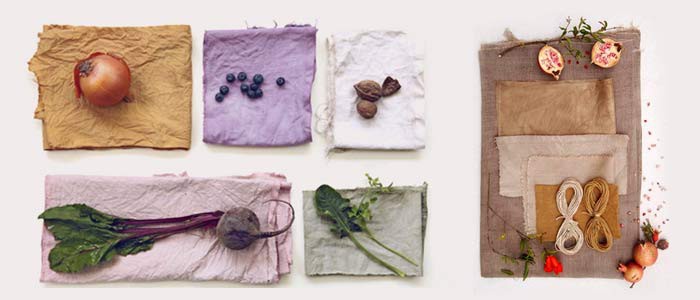Sustainability Dyes, Printing And Trends

Cotton as a fiber is plant-based and as such is more sustainable than synthetic fibers.
It is renewable and supports about 250 million people globally. Worn around the world, over 25 million tons of cotton is produced every year in around 85 countries.
Cotton is approximately 55 percent of the fiber used in clothing and textile production. Over 60 percent of the world’s cotton is grown and produced in developing countries and provides a livelihood for over 100 million farmers. But intensive farming methods are used, such as overusing water and pesticides, and those methods threaten the ecosystems cotton depends on. And so here comes the concept of Sustainable cotton.
IS SUSTAINABLE COTTON/ ORGANIC COTTON SAME?
The answer is no. By contrast, sustainable cotton is “cotton that’s grown carefully” with environmental and economic aspects considered while organic cotton is one of the standards for sustainable cotton that does not need pesticides or insecticides and uses less water and energy. It’s environmentally friendly and provides financial security for smallholder cotton farmers.
THE MANY BENEFITS OF SUSTAINABLE COTTON
Cotton production is an intensive water user. It takes a lot of water to produce cotton, requiring over 20,000 liters of water to produce just one kilogram of cotton, which is equivalent to one T-shirt and a pair of jeans. Sustainable cotton is badly needed. “No commodity is as polluting as cotton,” declares the Sustainable Trade Initiative. About 10 percent of all agricultural chemicals used globally are used by the cotton sector. It's only grown on about 2.5 percent of the world’s agricultural land. The pesticides end up in groundwater and rivers. They not only get rid of pests but also the natural enemies of those pests, and that interferes with the ecosystem.
DYEING IN SUSTAINABILITY
Dyeing plays a major role in incorporating sustainability as it requires a lot of water and energy consumption to dye even a single piece of fabric so leaving behind the conventional way of dyeing we can shift our focus more towards sustainable methods of dyeing.
For example we can drop the ideas of using direct, reactive, and azo dyes instead we can replace them with organic and natural options like vegetable dyes, turmeric, beetroot, onion skins, red cabbage, avocado, spinach and many more other options. We can easily tie dye using these things and use a mordant to fix the colors. Also, since people are moving so fast towards the idea of sustainable clothing making people aware of their contribution towards eco system is equally important.
PRINTING IN SUSTAINABILITY (BATIK)
Batik is one of the works of ancient art in some countries. This art has become closely associated with the identity of Southeast Asia particularly Indonesia. We define sustainable batik production as a batik production process that is non-polluting, conserving energy and natural resources, economically viable, safe for workers and consumers.
Also, Batik industries give rise to several environmental problems. Batik is one industry whose process of production uses synthetic dyes which contained metals, chemical coloring, and wax that can contaminate river water and subsequently causes severe water pollution problems. Recently, due to the high requests and economic initiatives, industry players switched to affordable raw materials for cost-saving. However, these materials are very crude of low quality and unsustainable and cause pollution of water bodies
BATIK PROCESS
Batik is a technique of wax-resist dyeing applying to the whole cloth by drawing dots and lines of the resist with a tool called a canting or by printing with a copper stamp called a cap. Natural material such as cotton and silk are used for the cloth. The first step is designing, waxing dyeing and eliminating the wax. Waxing and dying are multi-process to get more than one colors. The final process is removing the wax to get overall finished batik.
Since batik encourages the use of synthetic dyes so much, with passage of time there is a major increase in demand for sustainable methods of BATIK so that the eco system can be retained back to its previous functioning and bring a major decrease in the use of hazardous chemicals.
Gujarat has always been known for its colorful and traditional textiles. From dyes to prints everything. There are certain communities existing in Gujarat who has been working since five generations on this ancestral craft of batik. Earlier their ancestors have been using fruits and flowers for dyeing, from iron rusts to turmeric as they did not have synthetic dyes available to them but with passage of time and increase in demand for batik in market they started using all the manmade synthetic chemical dyes.
But again with passage of time as people became more aware about the importance of sustainability in nature they are shifting back to use of natural dyes.
KHAMIR, an NGO working closely with the artisans of Kutch region have been trying to find ways to ensure the sustainability of Batik.
A VERY MAJOR ISSUE THAT HAS BEEN OCCURING IS BATIK HAS HUGE CONSUMPTION OF WATER.
PRINTING IN SUSTAINABILITY (BLOCK PRINT)
India has been renowned for its printed and dyed cotton cloth since the 12th century and the creative processes flourished as the fabric received royal patronage. Evolution of different styles of designs has taken place in different parts of the country having its own particular local aesthetic.
Gujarat
Hand printing has been practiced in Gujarat by the Paithapur families. They use the mud resist – printing method to print their textile and make intricate blocks. These prints are called Sodagiri (trader) prints. The popular patterns in Kutch are black and red designs of dancing girls, birds and animals. The saris of Ahmedabad and Baroda have large mango patterns against a red or blue background. The Ajrak resist-printing technique is found in Anjar and Dhamadka in Kutch. In several patterns, the painted Ajrak cloth has various colors like red, blue, black and white. The other well-known centers for Block Printing in Gujarat are Bhavnagar, Porbandar, Vasna, Rajkot, Jetpur and Jamnaga
